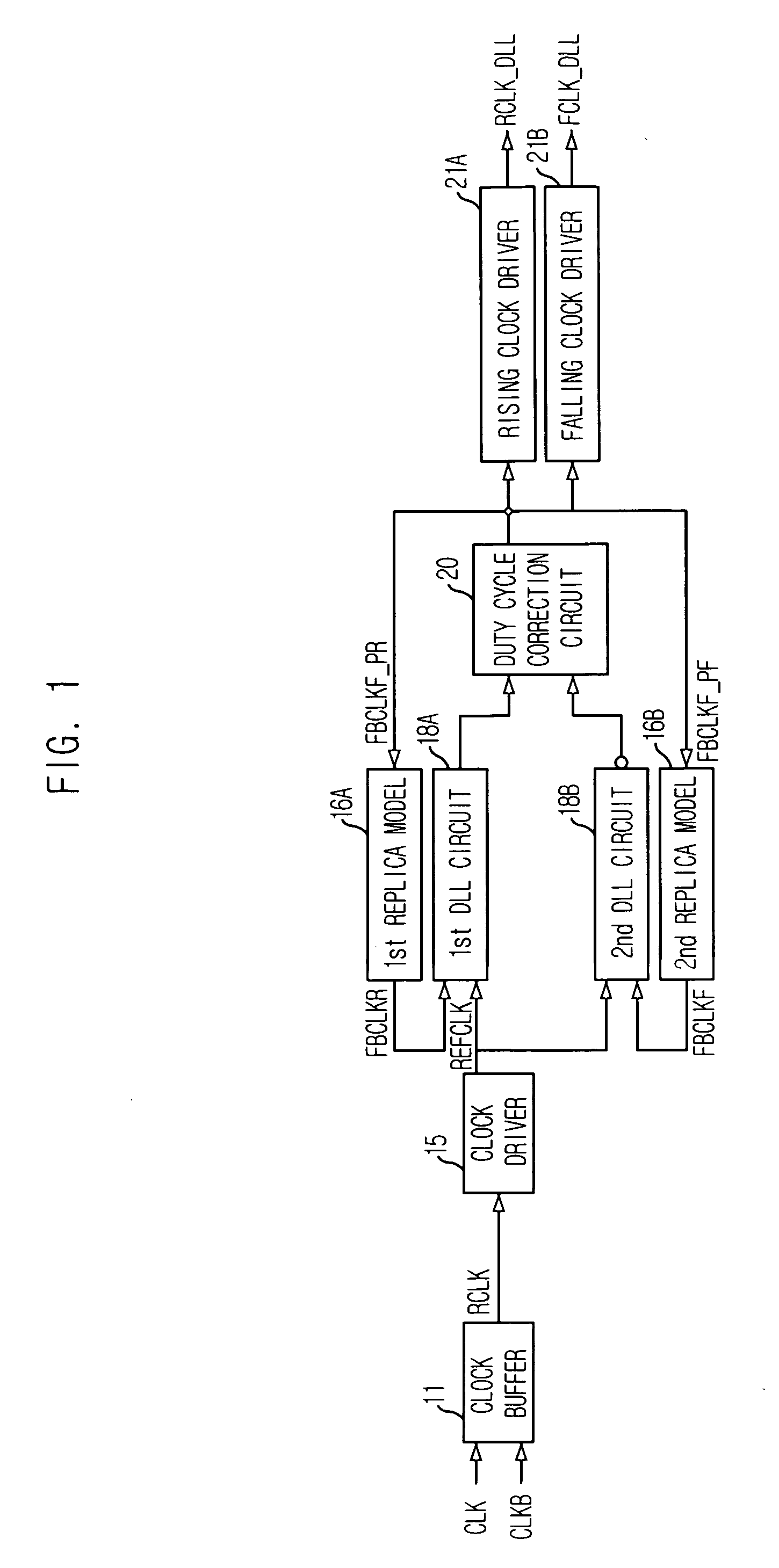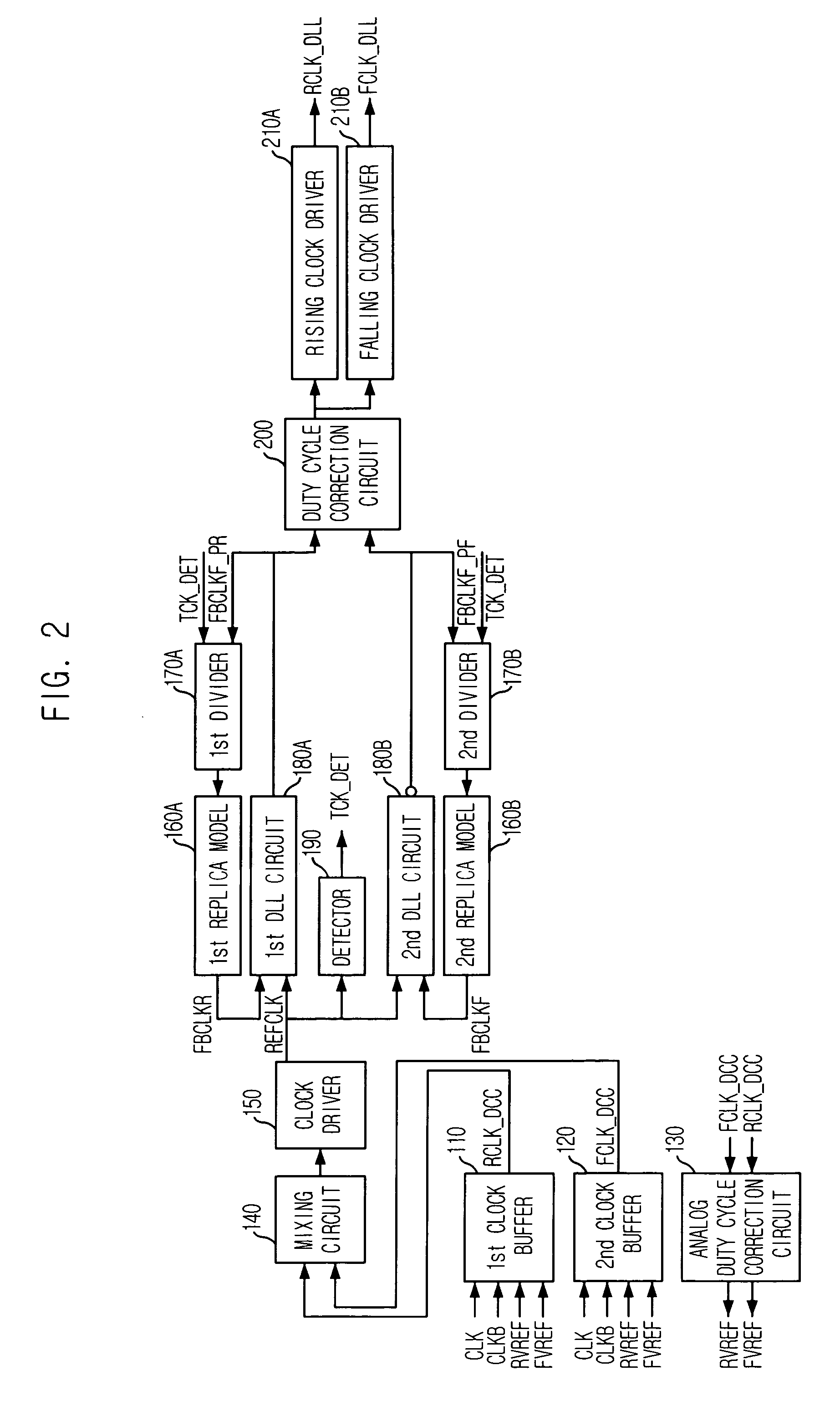Semiconductor memory device capable of easily performing delay locking operation under high frequency system clock
a memory device and semiconductor technology, applied in the direction of digital storage, pulse automatic control, generating/distributing signals, etc., can solve the problem of difficulty in performing exact delay locking operation
- Summary
- Abstract
- Description
- Claims
- Application Information
AI Technical Summary
Benefits of technology
Problems solved by technology
Method used
Image
Examples
Embodiment Construction
[0022]An object of the present invention is to provide a semiconductor memory device capable of easily performing a delay locking operation under a high frequency of system clock signal.
[0023]The semiconductor memory device according to the preferred embodiment of the present invention is characterized in that: first, an input unit to which the system clock signal is inputted performs the duty cycle correction and a DLL circuit receives the duty cycle corrected clock signal; second, the delay locking operation is performed after dividing the duty cycle corrected reference signal when the frequency of it is higher than a predetermined value; third, an output of the DLL circuit is directly used to make a feedback clock signal without the process of the duty cycle correction. The semiconductor memory device according to the present invention, with the above-described characteristics, can easily perform the delay locking operation using the system clock signal. The semiconductor memory ...
PUM
 Login to View More
Login to View More Abstract
Description
Claims
Application Information
 Login to View More
Login to View More - R&D
- Intellectual Property
- Life Sciences
- Materials
- Tech Scout
- Unparalleled Data Quality
- Higher Quality Content
- 60% Fewer Hallucinations
Browse by: Latest US Patents, China's latest patents, Technical Efficacy Thesaurus, Application Domain, Technology Topic, Popular Technical Reports.
© 2025 PatSnap. All rights reserved.Legal|Privacy policy|Modern Slavery Act Transparency Statement|Sitemap|About US| Contact US: help@patsnap.com



